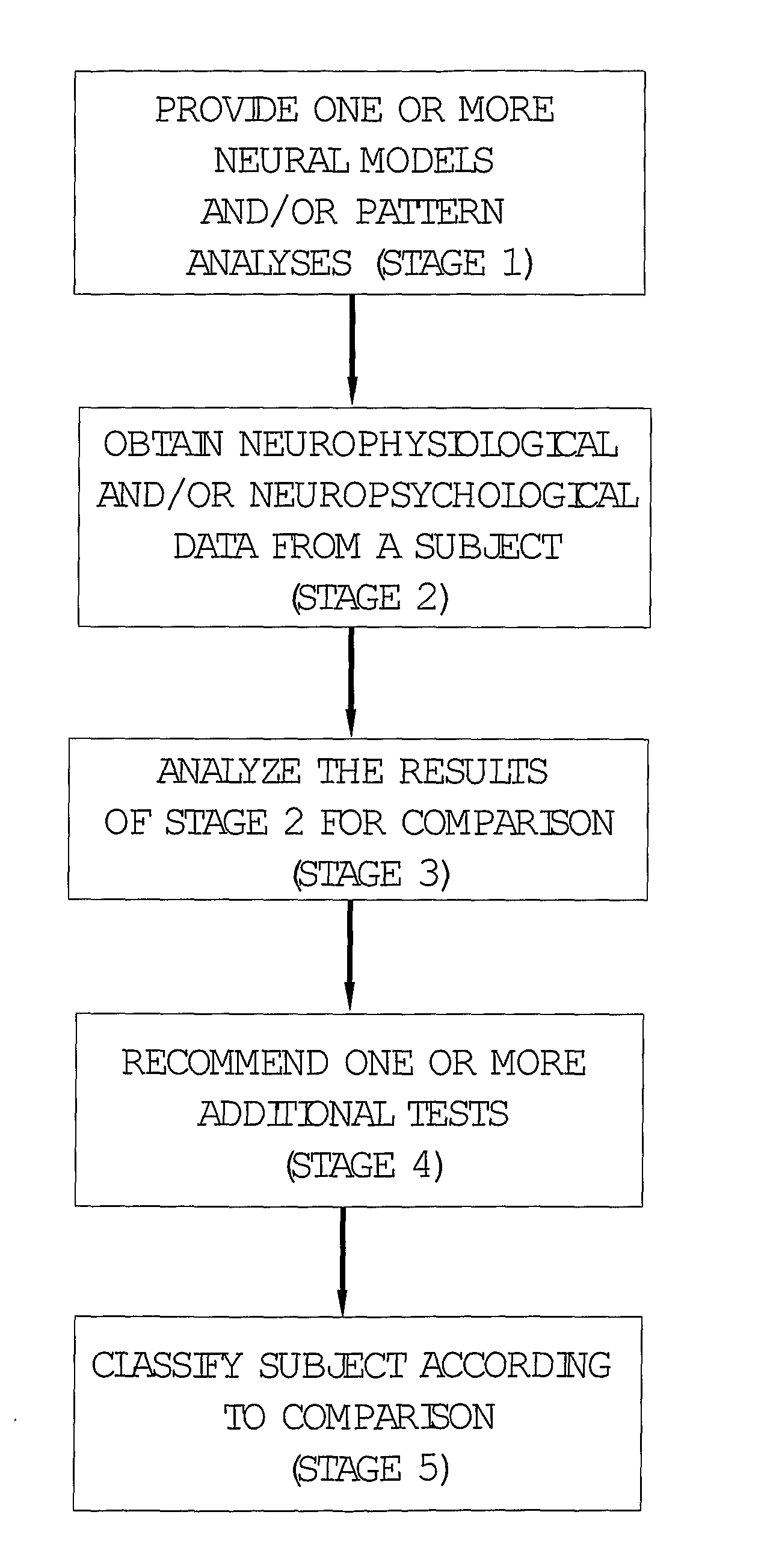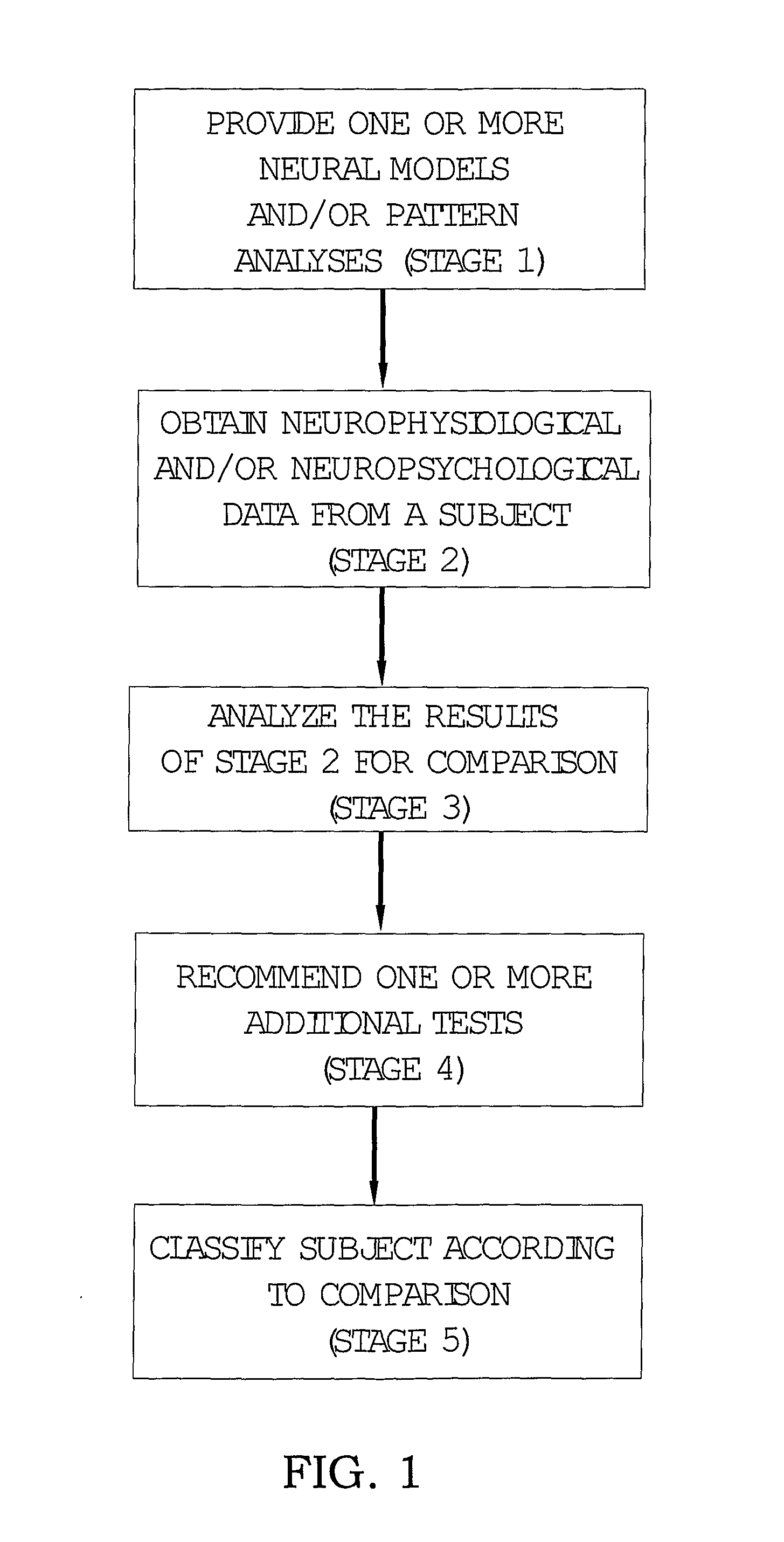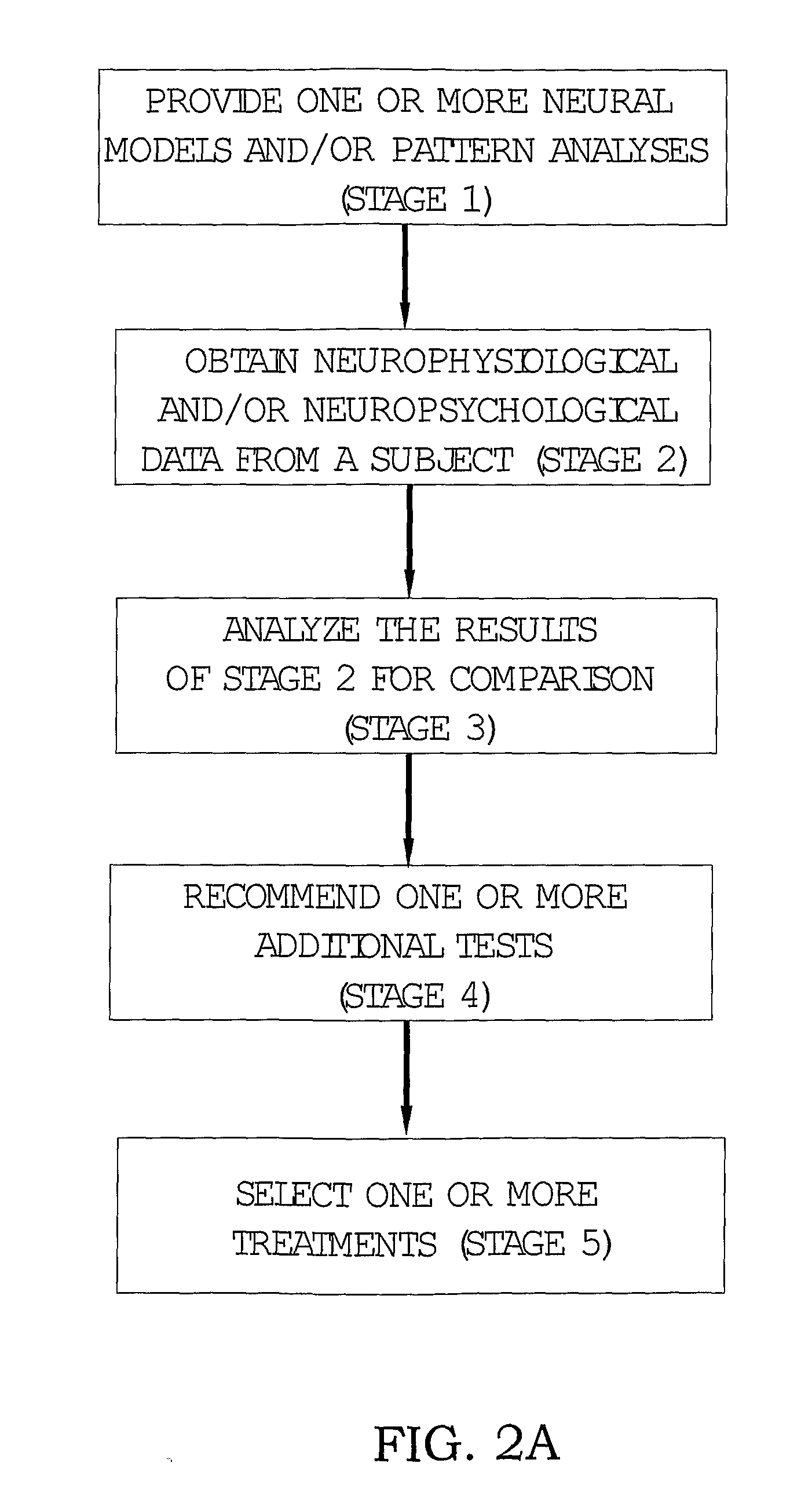Clinical applications of neuropsychological pattern analysis and modeling
a neuropsychological pattern and clinical application technology, applied in the field of clinical applications of neuropsychological pattern analysis and modeling, can solve the problems of background art that and background art does not teach or suggest a method
- Summary
- Abstract
- Description
- Claims
- Application Information
AI Technical Summary
Benefits of technology
Problems solved by technology
Method used
Image
Examples
example 1
Predicting Response of a Patient to Therapy (Hemiparesis)
[0110]As noted above, the therapeutic method of the present invention, in various embodiments, has been shown to be highly useful for therapeutic treatment of patients suffering from brain damage or other relevant brain disorder. This Example describes data which demonstrates that the diagnostic method of the present invention, in various embodiments, is highly useful for predicting the ability of a patient to respond to treatment.
[0111]Patients suffering from brain damage (specifically hemiparesis) were tested for their ability to perform two different types of tests, “box and block” (BB) test and the “Fugel-Meyer” assessment (FM), both of which are well known in the art. In addition, patients were assessed through the use of EMG (electromyography), which can demonstrate muscle activity even for patients who cannot otherwise move their arm (for example, due to lack of strength or other disability or injury). In contrast, BB a...
example 2
Predicting Response of a Patient to Therapy (Neglect)
[0115]Hemispatial neglect is a phenomenon in which the patient neglects one side of the body or of the perceived external surroundings; for example, if asked to draw an object, the patient will only draw one side of the object. With regard to the body, a patient may fail to use his or her left arm.
[0116]One test that is used to evaluate the severity and type of such neglect is known as BIT (behavioral inattention test), which is a standard test for unilateral visual neglect. Another test is SNT (starry night test) RT (reaction time). The starry night test involves a black background with many points of light, one of which has a different color; the patient must search for the light having the different color. The time required for the patient to locate this light point is the reaction time of the patient for this test. Patients were treated with suitable neural feedback, in order to stimulate the right temporal lobe, which had the...
example 3
Correlation of Network Activity with Physical Motor Activity
[0120]Example 1 related to hemiparesis and testing of the ability of the brain to induce various physical motor activities. During this testing, it was found that the time of receiving the first muscle activation signal, through EMG results, could be correlated with the timing of various network activities. These networks and their activities are shown in FIG. 16; the time of receiving the first muscle activation signal is shown with a blue line. Activities above the blue line occurred before this signal; those below the blue line occurred after the signal. The table shows the functional network, the portion of the brain involved in this network, the frequency of the signal and also the signal timing. Thus, this example shows that the methods of the present invention can also be used to truly correlate physical motor activities with the respective activities of the underlying functional networks.
[0121]FIG. 17 also demonstra...
PUM
 Login to View More
Login to View More Abstract
Description
Claims
Application Information
 Login to View More
Login to View More - R&D
- Intellectual Property
- Life Sciences
- Materials
- Tech Scout
- Unparalleled Data Quality
- Higher Quality Content
- 60% Fewer Hallucinations
Browse by: Latest US Patents, China's latest patents, Technical Efficacy Thesaurus, Application Domain, Technology Topic, Popular Technical Reports.
© 2025 PatSnap. All rights reserved.Legal|Privacy policy|Modern Slavery Act Transparency Statement|Sitemap|About US| Contact US: help@patsnap.com



